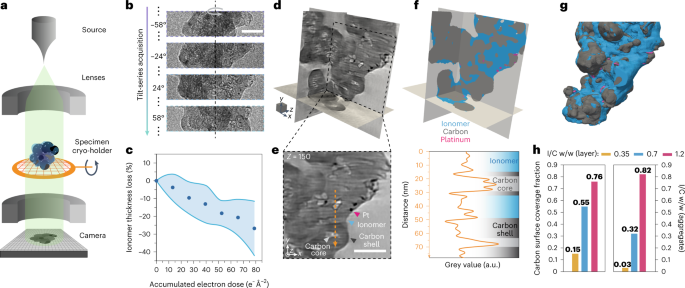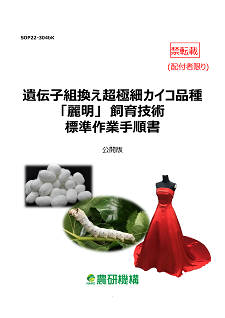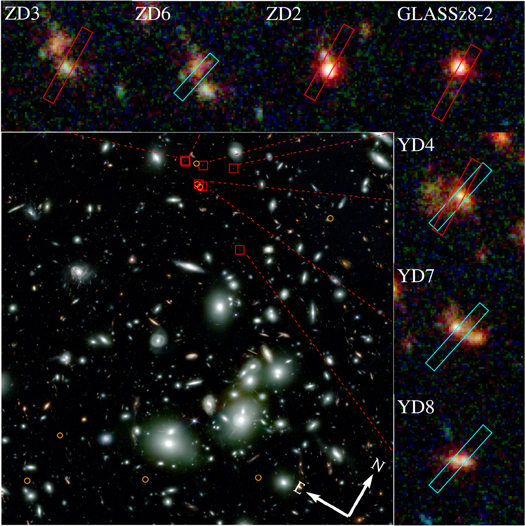2023-04-25 スイス連邦工科大学ローザンヌ校(EPFL)
これまでの伝統的な画像処理技術では、イメージング過程で物質が損傷するため、触媒層の構造を正確に把握することができず、不可能であった。そこで、Vasiliki Tileli氏らの研究チームは、低温下での電子顕微鏡によるイメージングと、深層学習による画像処理を組み合わせることで、触媒層のナノスケール構造を初めて明らかにした。
この技術は、プラチナ含有量を最小限に抑えつつ、効率的な触媒反応を促進するために、触媒メーカーにとって非常に有用な情報を提供する可能性がある。また、この技術は、電池ストレージ、水電気分解、エネルギー変換システムなど、様々な材料科学とエネルギー応用にも応用可能である。
<関連情報>
- https://actu.epfl.ch/news/cryo-imaging-lifts-the-lid-on-fuel-cell-catalyst-2/
- https://www.nature.com/articles/s41929-023-00947-y
燃料電池触媒層の3次元ナノイメージング Three-dimensional nanoimaging of fuel cell catalyst layers
Robin Girod,Timon Lazaridis,Hubert A. Gasteiger & Vasiliki Tileli
Nature Catalysis Published:17 April 2023
DOI:https://doi.org/10.1038/s41929-023-00947-y

Abstract
Catalyst layers in proton exchange membrane fuel cells consist of platinum-group-metal nanocatalysts supported on carbon aggregates, forming a porous structure through which an ionomer network percolates. The local structural character of these heterogeneous assemblies is directly linked to the mass-transport resistances and subsequent cell performance losses; its three-dimensional visualization is therefore of interest. Herein we implement deep-learning-aided cryogenic transmission electron tomography for image restoration, and we quantitatively investigate the full morphology of various catalyst layers at the local-reaction-site scale. The analysis enables computation of metrics such as the ionomer morphology, coverage and homogeneity, location of platinum on the carbon supports, and platinum accessibility to the ionomer network, with the results directly compared and validated with experimental measurements. We expect that our findings and methodology for evaluating catalyst layer architectures will contribute towards linking the morphology to transport properties and overall fuel cell performance.



